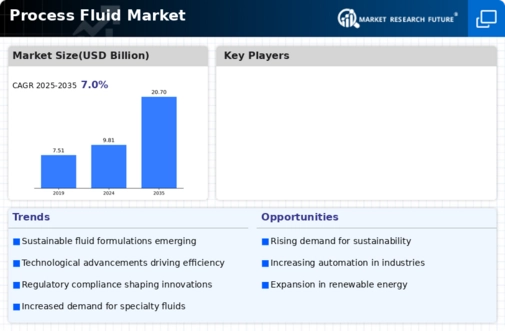Market Analysis
In-depth Analysis of Process Fluid Market Industry Landscape
The production of Process Fluids in different industrial sectors comprising various industries is affected by many factors that influence its dynamics, like demand and supply, among other things. Machinery efficiency and operations depend on processing fluids like hydraulic fluids, lubricants, coolants, etc. Demand for process fluids across different sectors – e.g., automobile & automotive manufacturing, energy, aerospace & defense – has its roots in macroeconomic developments worldwide. Specifically, during economic downturns, there may be reduced production levels as well as reduced demand for these substances, while periods of economic growth stimulate demands due to increased industrial activities. Consequently, investment decisions taken by companies heavily depend on an industry's health, prices, and volumes of output. Environmental concerns increasingly influence Process Fluid market dynamics. Manufacturers are now looking to produce environmentally friendly and biodegradable process fluids as a result of increasing emphasis being placed on sustainability. Products with reduced environmental impact that comply with strict regulations have emerged in response to the growing demand for green solutions. The Process Fluid market is highly competitive. In order to stand out in a crowd, manufacturers have to concentrate on the quality of their products, cost-effectiveness, and innovation. There are several ways in which market share positioning could happen within this sector, including collaboration and strategic partnerships, among other things that take place within the Process Fluids industry. Partnering with suppliers, research institutions, or other stakeholders helps to improve the quality of a product as well as streamline production processes, thereby enhancing its position in the Process Fluid market. Trade policies and geopolitical factors influence the overall market dynamics of Process Fluids. Geopolitical tensions, tariffs, and import/export regulations can have an impact on the global supply chain, thereby influencing the pricing and availability of process fluids. Regulations and standards significantly impact the Process Fluid market. For any product to find acceptance in the market, it must comply with safety standards, quality regulations, and environmental requirements. In addition to that, Consumer preferences and market trends also influence the dynamics of the Process Fluid market. Changes influence the demand for specific types of process fluids in industrial practices, such as increased use of advanced manufacturing technologies and a shift towards energy-saving processes. In response to this, manufacturers should be aware of these changes so they can develop products that resonate with changing industrial practices and customer tastes.



Leave a Comment